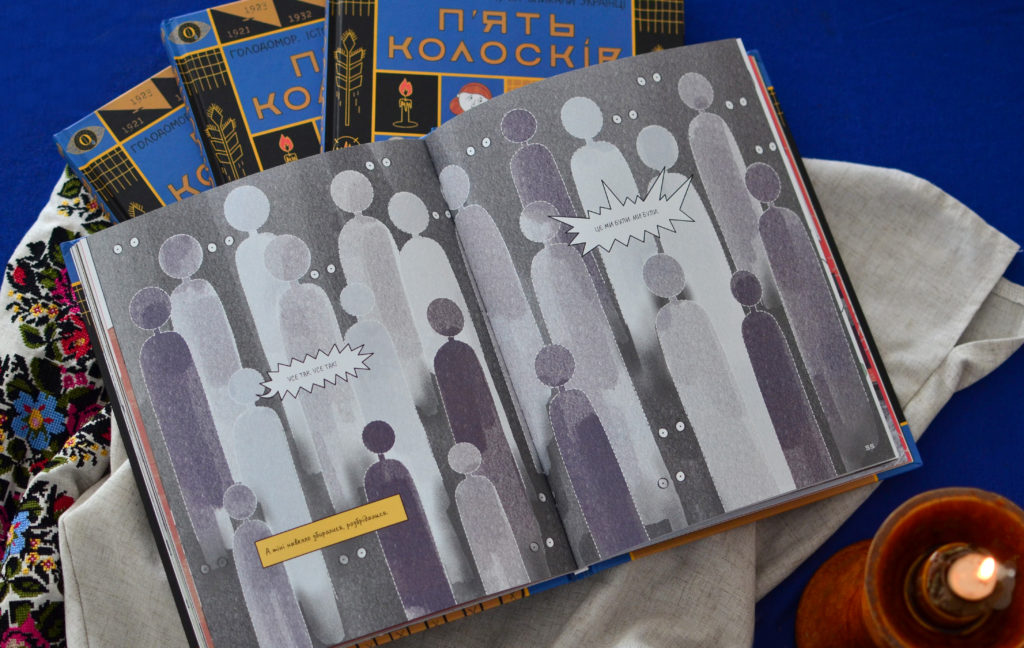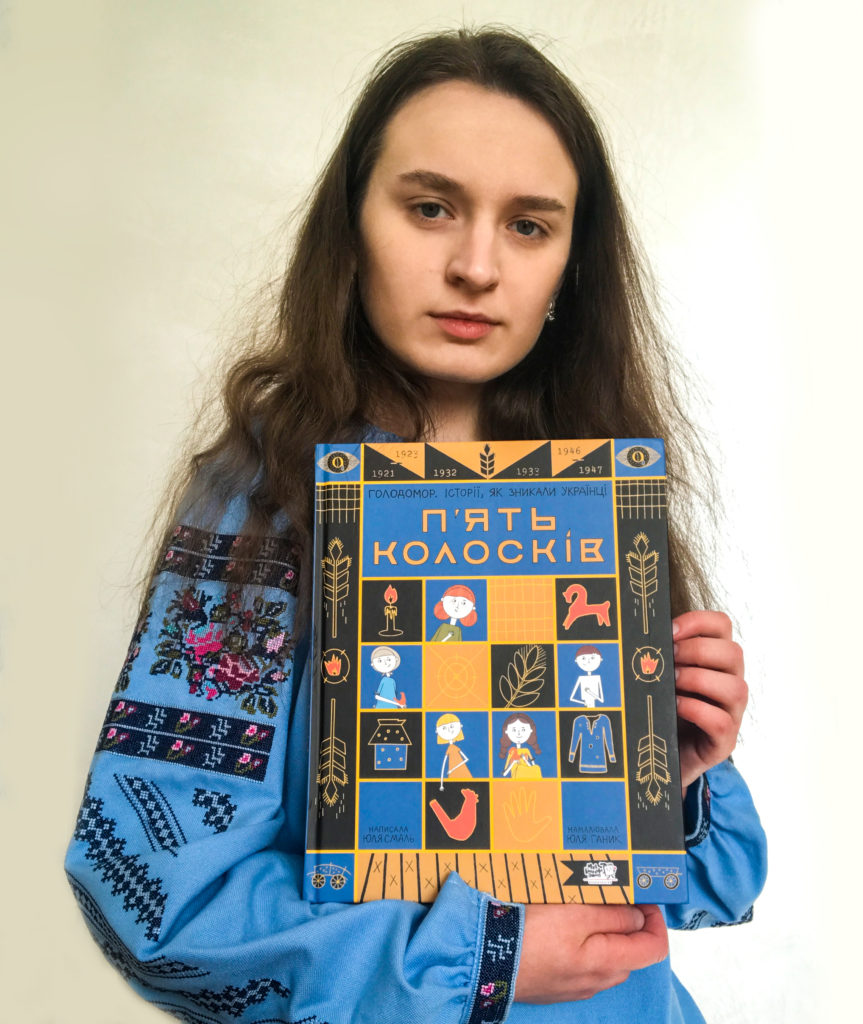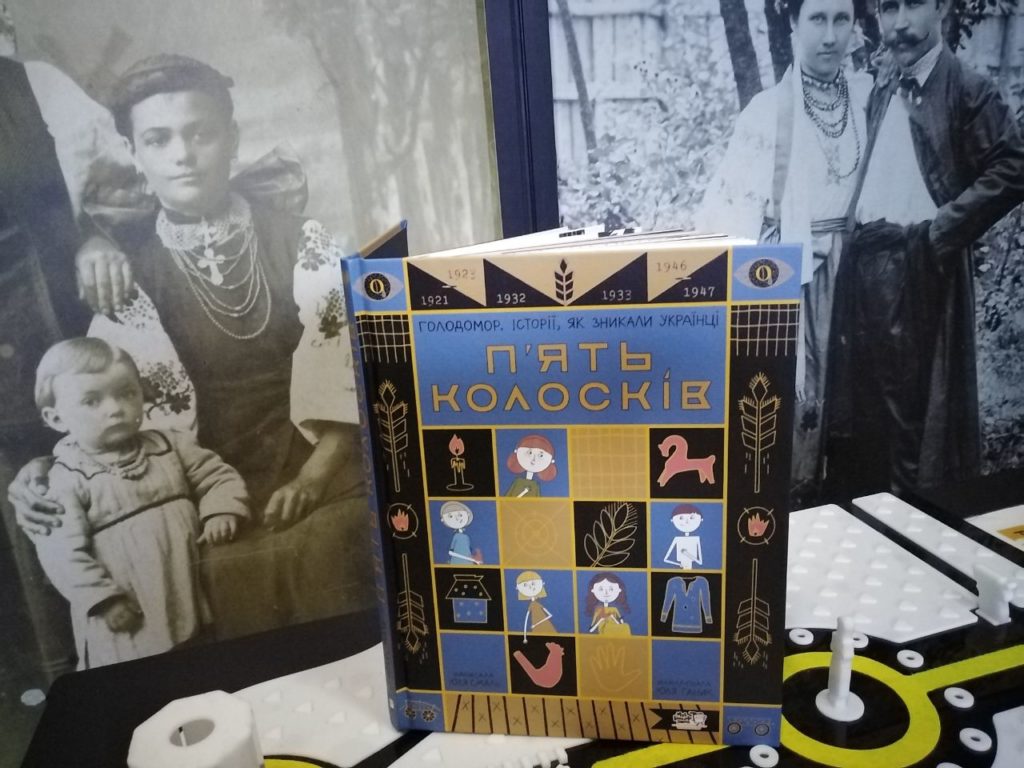“Five ears of grain”: a bright book about the dark times of our history
The book “Five ears of grain. Holodomor Stories of how Ukrainians were disappearing.” It is a publication for children, which in an accessible form, without traumatizing, tells modern schoolchildren about one of the most tragic pages of the Ukrainian past – the genocide of 1932-1933.
The book was created based on real stories collected by the author Yulia Smal among her acquaintances and their relatives. On the pages of the publication, children of that time retell to their peers from independent Ukraine: Marichka from Kherson Oblast, Petryk from Naddniprianshchyna, Khrystia from Donetsk Oblast, Hannusya from Kharkiv, and Tonya from Volyn.

“Although I’m a “zapadenka”(a person from the west of Ukraine), from Volyn, the Holodomor itself affected us only with the memory of terrible times,” Yulia Smal says. — But the post-war famine affected my family too. However, that was only the beginning of wandering. My family was deported to Siberia in 1946. My father was born in Kysyliovsk, in the Kemerovo region of Russia. Grandfather, a UPA soldier, was posthumously rehabilitated in independent Ukraine: he did not live several years before the collapse of the red monster. That is, our family’s hatred of the occupier and the tyrant is genetic, well, at least it was inherited. As soon as the wind of change blew, during the Soviet Union, my grandmother became a member of the Union of Ukrainian Women, sang in the church choir, and told stories of her childhood to her grandchildren. So, one of these stories is her memories.”
“When the publishing team of “My Bookshelf,” wrote to me and offered to illustrate this book, I immediately agreed, despite my busy schedule! At that moment, I felt a huge responsibility, an important mission and an incredible desire to make this book equally important for every reader, – designer Yulia Hanyk says about the work on the book. — For me, as an illustrator, it is valuable to create useful products of creativity. And now, reading the readers’ comments, I am happy that this book is exactly that – needed. Because this is our history and it is always relevant.”

Illustrator Yulia Hanyk.
Ms Yulia says that the most difficult thing was to cope with her own emotions, which this topic causes. “An author or illustrator, when they create their characters, they become them themselves, experiencing their emotions and actions on themselves. This was the most morally difficult thing – to be these children and conditionally pass their trials in those terrible years. At the same time, an important technical task was not to scare, but explain. That is why I tried to make everything that is complex in terms of content illustratively simple, symbolic and understandable for our audience.”
The book is written in the genre of a graphic novel, a type of comic book. According to the plot, eyewitness children tell their own stories to modern children, so it was crucial to focus the reader’s attention on direct language, and the comic book format coped well with this task. The illustrations are simplistic in style to reveal complex concepts through simple forms. At the same time, they are emotional, causing empathy, which is important for the viewer and reader.
According to the designer, there is a lot of symbolism and hidden meanings in the illustrations, and each drawn image can be explained. For instance, the main child characters have rounded shapes to emphasize their childishness and innocence. Instead, the negative ones are Komsomol members – have a pointed, sharp build that hints at their brutal actions.
“Now, when everything is happening again, and Moscow executioners are committing the same genocide against the Ukrainian people, we must act! In any format of the front – cultural, intellectual – to convey the truth to the world and the younger generations in order to stop the terrible evil that is so afraid of this truth. And actually, it is everyone’s task to remember the bitter pages of our history and the cruel price that we have been paying for our freedom over the years,” Yulia Hanyk adds.

“This is a bright book about the dark times of our history so that everyone learns the truth and is unable to either forget it or change it,” the publisher notes.
The book is recommended for children aged 10 and over.
Soon you will be able to purchase “Five ears of grain” in our museum. Follow the information on our website and social networks!
